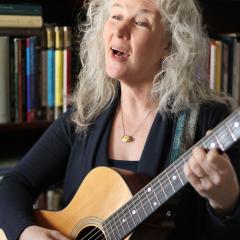
Pesach as a Vehicle for Congregational Reflection and Transformation
Passover, perhaps more than any other holiday, opens wide the doors between our past and our future, between our people and all people. As we retell our stories in both our homes and synagogues, we are able to find myriad ways in which our journey from degradation to redemption and from slavery to freedom becomes the story of all people around the world who are still in need of redemption, still struggling for their freedom. It is no surprise that we now see innovative haggadot that concern themselves with human trafficking, LGBTQ rights, racial discrimination, domestic violence, drug addiction, and many other social justice issues. The seder becomes a vehicle for transformation, a focal point for the relevant causes that should concern us in every generation. No other Jewish holiday embraces both our distinctively Jewish world and the larger world in which we live to the extent that Passover does.
The stages and symbols of the Passover seder might also enable us, as congregational leaders, to engage our Boards and Committees in a bit of soul-searching and spring cleaning on behalf of our own congregations. The questions that we ask, the music that we choose, and the ways in which we consciously bring the Passover story into our synagogues will help our congregations themselves to grow into places of freedom, vision, and action on behalf of ourselves and others.
Just a few examples for congregational exploration in this season:
Our seder begins with an opening of our homes and our hearts – we recite the ancient Aramaic “Halachma Anya,” inviting all those who are hungry to join us at our table. While the Aramaic may not resonate with many of today’s Jews, the message surely does. At my family’s seder this year, we will sing Carrie Newcomer’s “Room at the Table” (https://www.youtube.com/watch?v=92OM5bdQ4N4).
When we taste the Charoset, reminding us of the mortar with which we built for others, we can highlight the gifts and resources that we bring to the construction of today’s congregations. Consider the inspiring “Who Can Build” by Doug Mishkin (insert 30 seconds of mp3), written for his own synagogue, Temple Micah in Washington, DC.
As we hide the Afikoman, we might ask ourselves, “What gifts are hidden within our membership, and how might we uncover them?” And no doubt, there are many more than four relevant questions. Have we been liberated, as congregational boards, from narrow places in our synagogue’s history? How was that accomplished? What are the success stories that we should recount to our “children” as we train new generations of leaders? Could we categorize four types of congregants? What are the varying needs that different segments of our congregations represent? Are their needs being heard and responded to in appropriate ways? Are we appropriately appreciative of all those from whom we benefit? Administrative and custodial staff? Teachers? Volunteers? Do we sing their praises enough? When it comes time for Hallel, we could do so with melodies such as Benjie Schiller’s “Mi Shebeirach for the Congregation.” (insert 30 seconds here)
By combining our traditional words and melodies with the reality of our congregational lives today, we can use our congregational seders and our Passover season as a vehicle for reawakening relevance, involvement, and a renewed sense of responsibility within our own synagogue walls as well as within our larger communities. We must not only recount, but respond as well. A zissn’ Pesach to you and yours!
Cantor Ellen Dreskin (DFSSM ’86) teaches and consults in a variety of areas, from contemporary Jewish music to synagogue transformation, from experiential education to enlivened liturgy and Jewish mysticism. She currently serves as Coordinator of the Cantorial Certification Program at the Debbie Friedman School of Sacred Music at HUC-JIR in New York. Ellen travels extensively to congregations around the country as a scholar-in-residence, and has taught for many years on the faculty of URJ Summer Kallot, Hava Nashira, and the URJ Kutz Camp Leadership Academy. She is married to Rabbi Billy Dreskin, and is proudest of all of their three joint projects: Katie, Jonah (z”l), and Aiden.

